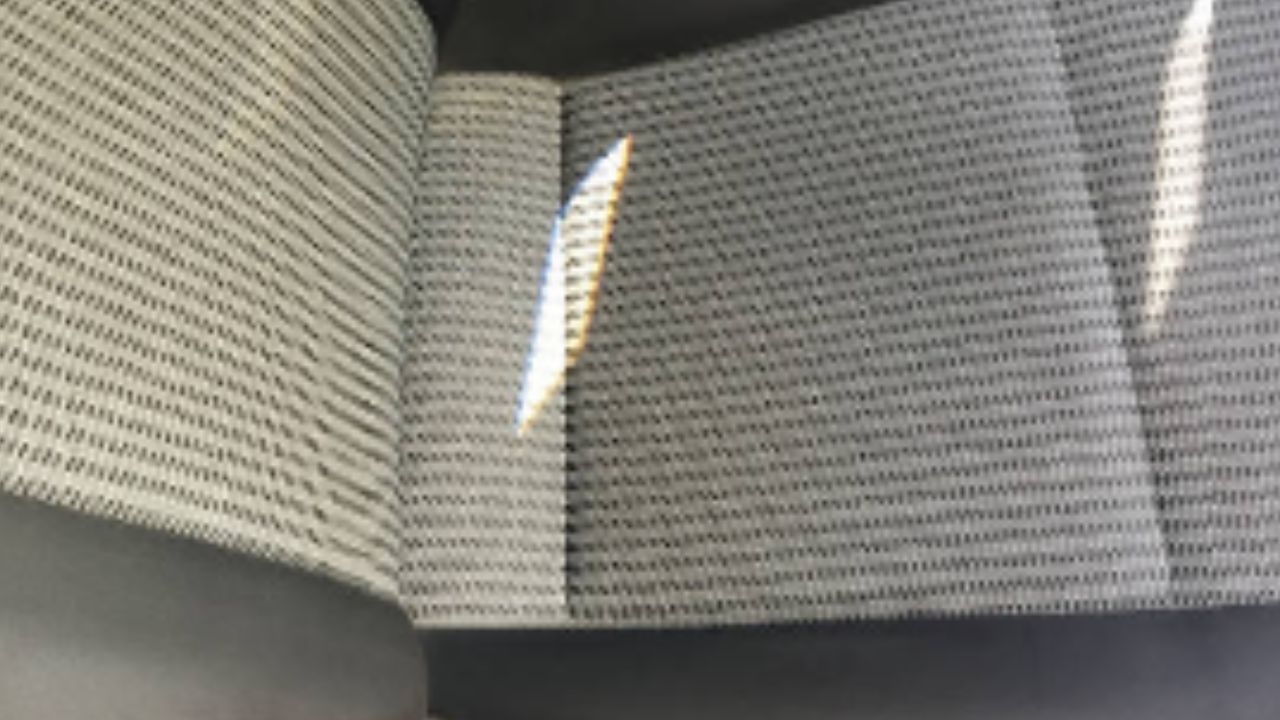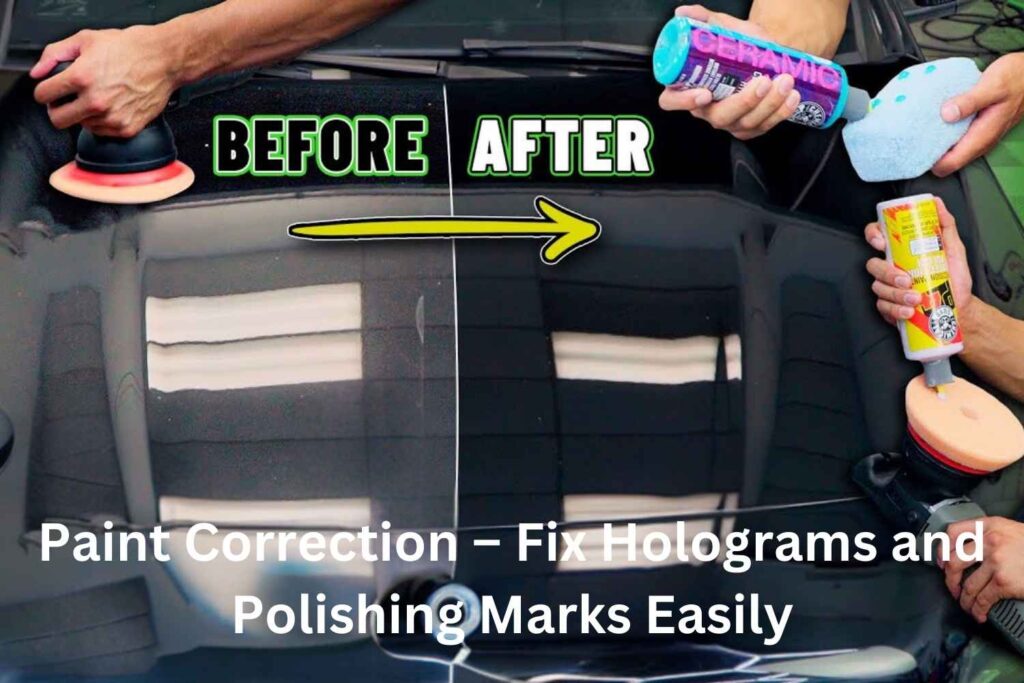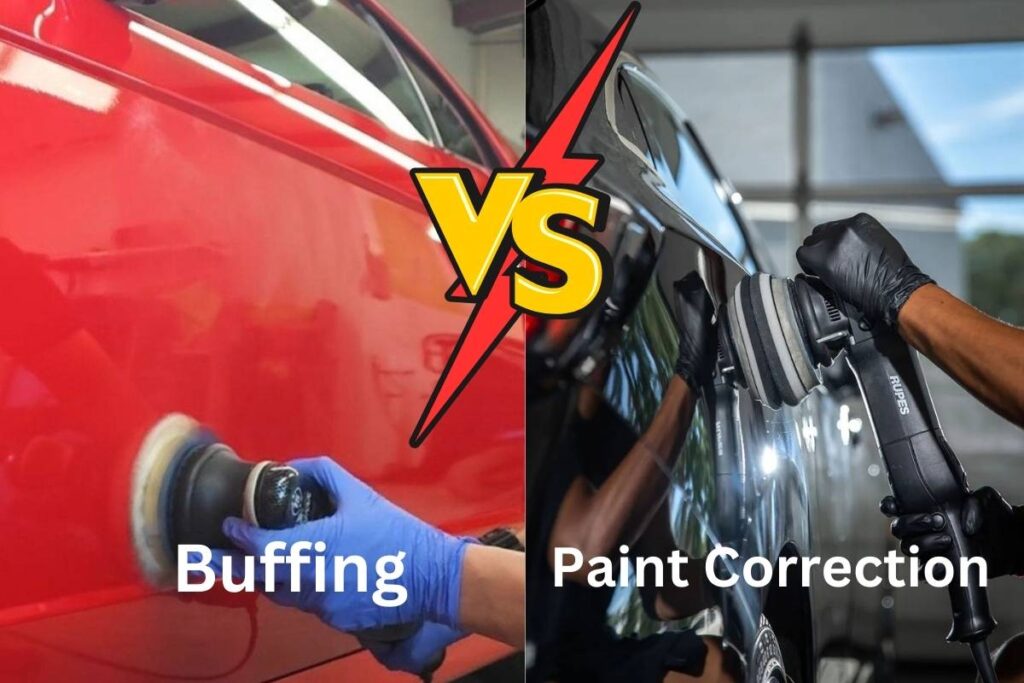Have you ever looked at your car’s perforated leather seats and wondered how to clean them without damaging the material? It’s a common dilemma for car owners who love the luxurious feel of leather but don’t want grime building up in the tiny perforations. Regular cleaning methods won’t cut it, and using the wrong products can do more harm than good. So, what’s the best way to tackle this challenge while keeping your seats in perfect condition? In this guide, we’ll explore how to clean perforated leather car seats using 7 easy and effective methods that anyone can follow. Keep reading to find out how to keep your car seats looking brand new without the stress!
Table of Contents
ToggleWhy Cleaning Perforated Leather Seats Is Important?
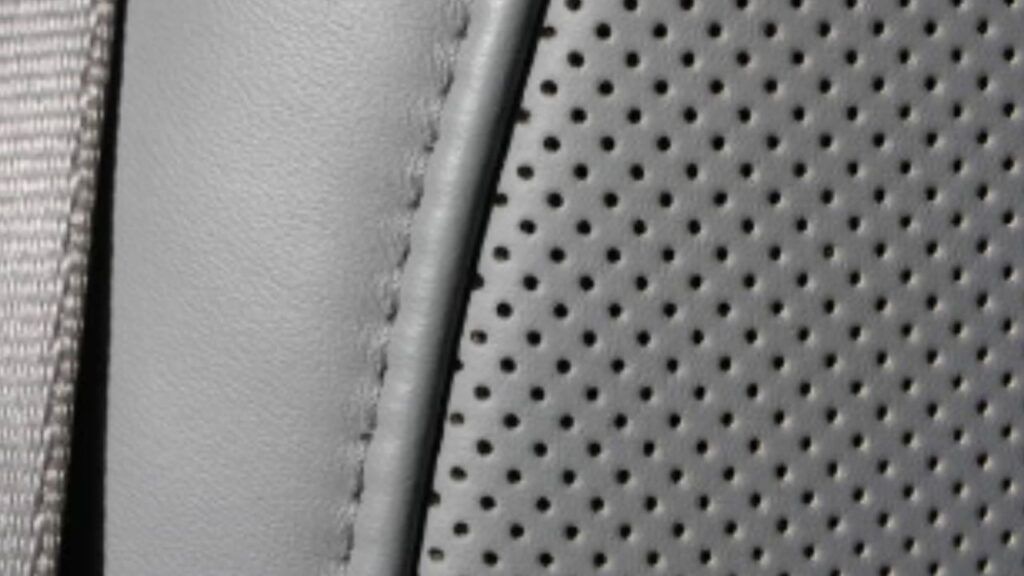
First things first—why is it so important to clean these kinds of seats carefully? Well, perforated leather seats look great, feel luxurious, and provide better ventilation in your car. But because of the tiny holes (the perforations), dirt, dust, crumbs, and liquids can easily get trapped inside. If not cleaned properly, this can lead to bad smells, stains, and even damage to the leather over time.
Regular cleaning keeps the seats looking nice and stops the leather from cracking. No one likes sitting on dirty seats! Let’s go over the simple steps to keep them clean.Regular cleaning keeps the seats looking nice and stops the leather from cracking. No one likes sitting on dirty seats! Let’s go over the simple steps to keep them clean.
Step-by-Step Guide for Cleaning Perforated Leather Seats
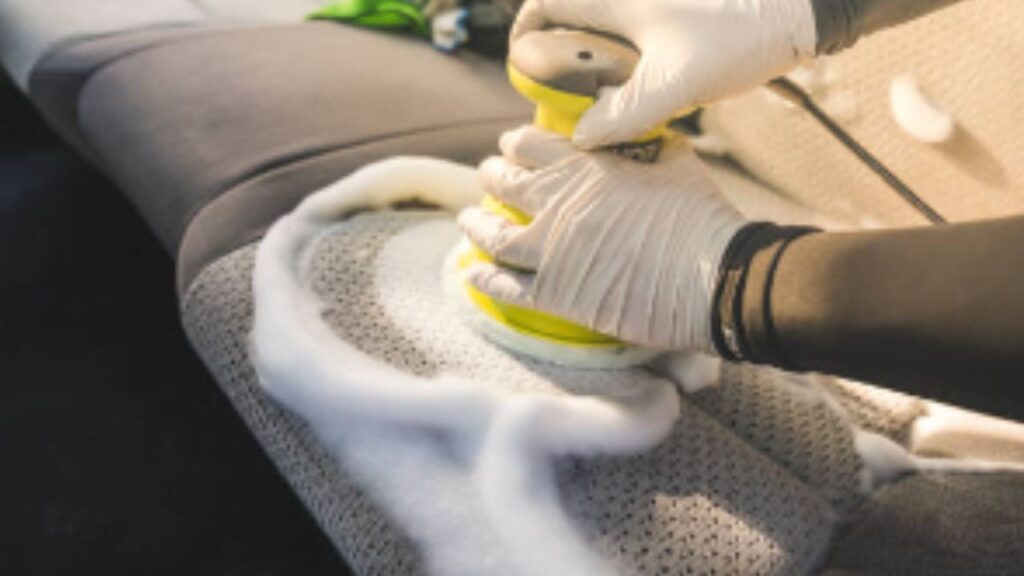
Pre-Cleaning Preparation
Before we jump into the cleaning process, we need to get everything ready. Trust me, a little preparation makes the whole thing easier and more effective.
- Vacuum First: The first step is simple—grab a vacuum cleaner with a small nozzle attachment (those skinny ones that can fit into tight spaces). Gently vacuum your seats to pick up any loose dirt, dust, or crumbs. This way, you won’t rub any abrasive particles into the leather during cleaning, which could cause scratches or tears.
- Patch Test: This is super important! Before you use any cleaning product on your seats, test it on a small hidden area first. Sometimes, cleaners can discolor or damage the leather. So, try it out in a corner or under the seat where it won’t be visible if things go wrong.
Method 1: Using a Leather Cleaner
Now, we’re ready to start cleaning! For this first method, we’re going to use a leather cleaner specifically designed for cars. You can find these at most auto stores or online, and they’re great because they’re made to be gentle on leather while removing dirt.
- How to Use: Apply a small amount of the cleaner to a soft microfiber cloth. Don’t spray it directly on the seat, because too much liquid can seep into the perforations. Gently rub the cloth over the leather in small circular motions. This will help lift off any dirt or stains without damaging the leather. After you’re done, wipe the area with another clean, dry microfiber cloth.
Why does this work? The microfiber cloth keeps the surface from scratching. Using the right leather cleaner stops harsh chemicals from hurting the leather.
Method 2: DIY Vinegar and Water Solution
Not a fan of buying special cleaners? No problem! You can use a simple mixture of vinegar and water to get the job done. It’s natural, effective, and most of us already have vinegar in the kitchen, right?
- Mix It Up: Create a solution of 1 part vinegar to 2 parts water. Dip a soft cloth into the mixture, making sure it’s damp but not dripping wet. Again, gently wipe the seats in a circular motion, focusing on any spots that look dirtier.
- Wipe It Dry: After cleaning, use a dry cloth to wipe away any excess moisture. Be careful not to let the liquid sit on the seats too long, as it can seep into the holes and cause mold or bad smells.
Vinegar works well because it cuts through dirt and kills germs. When mixed with water, it’s gentle and won’t harm the leather.
Method 3: Baking Soda for Stain Removal
Got a stubborn stain that just won’t come off? Baking soda is here to save the day! This simple household ingredient can do wonders for leather seats when used correctly.
- Make a Paste: Mix baking soda with a little bit of water to form a thick paste. Apply the paste directly to the stain and let it sit for about 10-15 minutes. The baking soda will absorb the stain and loosen the dirt.
- Wipe It Off: After the time’s up, wipe the paste off with a damp cloth, then dry the area with a clean microfiber towel. If the stain is still there, you can repeat this process until it’s gone.
Baking soda is a natural, gentle abrasive, so it’s great for cleaning without causing damage. Just be sure to wipe off any residue so that it doesn’t leave a white film on your seats.
Specialized Cleaning Techniques
Method 4: Using an Air Compressor
Perforated leather seats often trap dirt in the little holes, and no amount of wiping can get that out. Here’s where an air compressor comes in handy.
- How to Use: Use a small air compressor or a can of compressed air (you can get these at any hardware or auto store) to blow air into the perforations. This will push out any dirt or debris stuck in the holes. Make sure to vacuum after this step to pick up all the particles you just dislodged.
Method 5: Steam Cleaning
A steam cleaner is another powerful tool for deep cleaning, especially when it comes to removing stubborn grime or bad smells.
- Use with Caution: Before you go all in, test the steam cleaner on a hidden part of the seat. Steam is great for loosening dirt, but too much heat can damage leather. Keep the nozzle at a safe distance and don’t hover in one spot for too long. Afterward, wipe the seats with a clean, dry cloth.
Method 6: Baby Wipes for Quick Cleanups
Sometimes, you just need a quick fix. Baby wipes are perfect for this. They’re gentle, alcohol-free, and easy to use on leather.
- How to Use: Just grab a wipe and gently clean the surface of the leather. Baby wipes are perfect for light cleaning between deep cleanings, and they won’t dry out or crack your leather. Just remember to follow up with a dry cloth to avoid leaving any moisture behind.
Method 7: Toothpick or Gum Stimulator for Fine Cleaning
If you find dirt or grime stuck in the small perforations, you can use a toothpick or a rubber-tipped gum stimulator to gently loosen the debris. Just be careful not to poke too hard, as you don’t want to damage the leather.
Post-Cleaning Care
Drying the Leather Seats
Once your seats are clean, it’s time to dry them. This is important to prevent any moisture from getting trapped in the leather, which could lead to mold or mildew.
- How to Dry: Use a clean microfiber cloth to blot any remaining moisture. Then, leave your car windows open or park it in a shaded area with good airflow to allow the seats to air dry completely. Avoid direct sunlight, as it can crack or fade the leather.
Applying Leather Conditioner
After all that cleaning, your leather seats might feel a little dry. That’s where conditioning comes in. Leather conditioner helps restore moisture and keeps the leather soft and supple.
- How to Use: Apply a small amount of conditioner to a clean cloth and gently rub it into the seats. Make sure to get into the perforations, but don’t use too much product—it can clog the holes and cause buildup. After letting it sit for a few minutes, buff it off with another clean cloth.
Maintenance Tips for Perforated Leather Seats
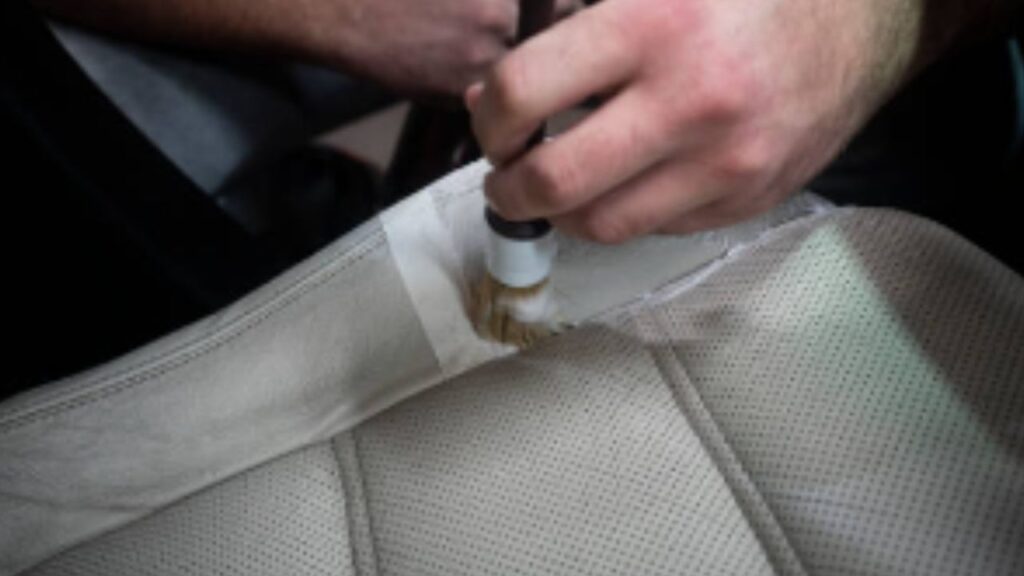
Keeping your seats clean is much easier if you maintain them regularly. Here are some tips to help you out:
- Clean Regularly: Don’t wait until your seats are covered in dirt to clean them. A quick wipe-down once a month can go a long way in keeping them looking fresh.
- Use Seat Covers: If you have pets or kids, seat covers are a great way to protect your leather from stains and spills. Just make sure to choose covers that are breathable so that you don’t block the perforations.
- Avoid Harsh Chemicals: Stick to cleaners that are designed for leather. Using harsh chemicals can strip away the natural oils that keep your seats soft and smooth.
- Condition Regularly: Leather can dry out over time, especially if your car is parked in the sun a lot. Regular conditioning will help prevent cracks and fading.
Common Mistakes to Avoid
It’s easy to make mistakes when cleaning leather seats, but with these tips, you’ll be on the safe side:
- Don’t Oversaturate: Too much water or cleaner can seep into the perforations and cause mold. Always use a damp cloth, not a soaking wet one.
- Don’t Skip the Patch Test: Always test your cleaner in a hidden spot first. You never know how the leather will react, and it’s better to be safe than sorry.
- Don’t Use Abrasive Brushes: Stick to soft cloths or brushes made for leather. Anything too rough can scratch the surface.
Conclusion
Now that you’ve learned how to clean perforated leather car seats with these 7 easy and effective methods, maintaining your car’s luxurious look doesn’t seem so tough, does it? The key is to be proactive—clean regularly, use gentle cleaners, and always condition the leather to keep it soft and crack-free. Whether you’re battling stubborn stains, stuck debris, or just doing routine upkeep, you now have the tools and techniques to handle it all.
Moving forward, start by creating a simple cleaning schedule. Wipe down your seats at least once a month and apply a leather conditioner every few months. Avoid harsh chemicals and never skip the patch test! With these small steps, your car’s interior will stay in pristine condition for years to come. So go ahead, apply what you’ve learned, and keep those seats looking brand new!
Frequently Asked Questions (FAQ)
How to clean stuff out of perforated leather seats?
To clean dirt or crumbs from perforated leather seats, start by vacuuming with a soft nozzle to remove loose particles. For dirt stuck in the holes, use compressed air or a soft-bristle brush to gently lift the debris. Finish by wiping the surface with a damp microfiber cloth to avoid leaving any residue behind.
How often should I clean perforated leather seats?
It’s a good idea to clean your perforated leather seats once a month. Regular cleaning prevents dirt and grime from building up in the perforations, which can cause damage over time. If your car gets heavy use or you often have passengers, you might want to clean the seats more frequently.
How to clean urine from a perforated leather car seat?
First, blot the area with a dry towel to absorb as much liquid as possible. Then, mix a solution of water and mild leather cleaner or vinegar. Use a damp cloth to clean the area gently. Make sure not to over-saturate the leather. After cleaning, use a leather conditioner to restore moisture and prevent cracking.
How do you remove residue from leather seats?
To remove sticky residue from leather seats, use a leather-safe cleaner or a mixture of mild soap and water. Apply the cleaner to a soft cloth, then gently wipe the affected area. Avoid scrubbing too hard, as this could damage the leather. Wipe it clean with another damp cloth, and let the seats air dry.
Can I use vinegar to clean perforated leather seats?
Yes, you can use vinegar to clean perforated leather seats, but it should be diluted with water. Mix 1 part vinegar with 2 parts water and apply it with a soft cloth. Be careful not to soak the leather. After cleaning, wipe the area dry and use a leather conditioner to keep the leather soft.

